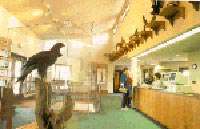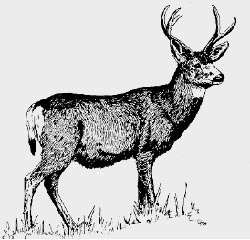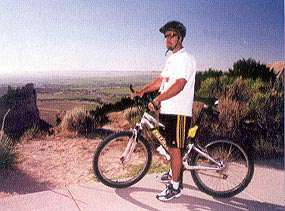Wildcat Hills Nature Center
category : Nature Centers
 In October 1995 The new Wilcat Hills Nature Center was opened. The construction of the Nature Center was a colaborative effort between a group of local civic and educational leaders and the Nebraska Game and Parks Commission.
In October 1995 The new Wilcat Hills Nature Center was opened. The construction of the Nature Center was a colaborative effort between a group of local civic and educational leaders and the Nebraska Game and Parks Commission.The center's split-level design takes advantage of the hilltop location with little intrusion on the scenic site, and the building's windows are deeply tinted so visitors can closely observe birds and other wildlife coming from the forest to use feeders and plantings along the building's north side. Windows and observation decks extending along the building's north and east sides overlook the pine forest and the North Platte Valley and Scotts Bluff National Monument.
A reception and display room feature a dramatic, 27-foot-tall artificial ponderosa pine tree extending from the center's lower level up through an opening to the ceiling of the top floor. The artificial tree will hold a continually changing assortment of life-size mounts of species that live on or in the, Wildcat Hills forest, and a self-guided audio program will provide additional information about the display.
The center's classroom has computer modem hookups, an interactive bird identification computer system, a large screen monitor and a videocassette player. The center's classroom can accommodate about 60 students.
In the lower-level display area, a landscape mural by Gering artist Mary Hunt covers the south wall and the staircase to the upper floor. The mural blends into an artificial rock outcrop with several wildlife mounts. The mural depicts a Wildcat Hills scene from the nearby Buffalo Creek Wildlife Management Area and includes a creek, a small marsh and a mixed ponderosa pine forest-and-grasslands vista extending to distant rocky bluffs. A hawk, a vulture and an eagle circle above the scene, and the mural depicts an assortment of other birds, mammals, reptiles, flowers and other plants and animals common in the Wildcat Hills.

Near the mural is an interactive computer display featuring endangered species and neotropical birds. Many of the 350 species of neotropical birds, species that winter in Mexico, the Caribbean and Central and South America, migrate through Nebraska. The neotropicals are in decline as habitat is lost and degraded and as threats from nest parasitism and predation grow. Using the computer's touch screen, visitors can learn about individual species and view maps of their migration routes extending as far south as the southern tip of South America. The computer's sound system reproduces the songs of birds common to Nebraska. The lower level also includes a live bee colony.
Admission: Park Permit Required
Hours: Summer hours: 8 am-4:30 pm daily. Winter hours: 8 am-4:30 pm, Mon.-Fri.
Address: 10 mi. S of Gering on Hwy. 71
Phone: 308-436-3777
Our Email: wch@ngpc.state.ne.us
Come visit us in Wildcat Hills SRA, Nebraska

